Virtual worlds are the golden path to achieving Artificial General Intelligence and positive Singularity, Dr Ben Goertzel’s, CEO of Novamente LLC and author of “The Hidden Pattern: A Patternist Philosophy of Mind” explained in his presentation “Artificial General Intelligence in Virtual Worlds” given at the Singularity Summit 2007 earlier this month. According to Goertzel, Singularity is no longer a far future idea. About a year ago Goertzel gave a talk “Ten Years to a Positive Singularity — If We Really, Really Try.”
The slide that opens this post was in Goerzel’s presentation. It depicts an Archailect, Archai from the Orion’s Arm science-fiction world — a mega scale brain, “sophont or sophont cluster that has grown so vast as to become a god-like entity.”
What is singularity?
Singularity is the creation of the kind of “massively intelligent machines” Hugo de Garis discusses in his book “The Artilect War.” — “machine mega brains that may end up being smarter than human brains by not just a factor of two or even ten times but by a factor of trillions of trillions of time i.e. truly godlike.” De Garis presents these technologies in a clear and simple way. And he discusses the ethical, philosophical and political questions of Singularity.
Harnessing the wisdom of crowds in the quintessential rapid prototyping environment for embodied virtual agents — Second Life – may well turn Artificial General Intelligence into an idea with traction. And the introduction of AGI into virtual worlds certainly gives a new context within which to suggest that Singularity is a mere decade away. With millions or soon perhaps billions of networked human minds working on it, Singularity may indeed happen sooner than we think.
Second Life Insider cracks “Do you want your pet whispering “Dave? Dave?” as you tear memory modules out though?” Remember Hal 9000 from 2001? But indicating also the sentiment that many Second Lifers will have when they hear of the plans Novamente and Electric Sheep Company have to collaboratively introduce AI into virtual worlds (the firms haven’t formally announced which virtual worlds, but Second Life seems an awfully likely guess to be one of them), the Second Life Insider post ends on a positive note. Eloise Pasteur writes “Seriously though, good luck to them all.”
What is Artificial General Intelligence?
Artificial General Intelligence has come to the fore in the last few years, Dr. Ben Goertzel explains. For a long time the AI field has been very task-focused and quite successful at that. Can you beat Deep Blue at chess? But as Goertzel points out Deep Blue can’t player checkers or Go. It cannot take what it has learned in chess over to other areas. Narrow AI has not proved to be a path leading to AGI. But fasten your seat belts Second Lifers! You may be the key to the emergence of AGI and the rapid prototyping of the Singularity.
An AGI is a system that can achieve a variety of complex goals in a variety of complex situations — something seems to require a system with the capability to understand what it is, what others are, and to understand what the problem is rather than just solving a problem or problems posed by programmers. In other words AGI achieves autonomy.
The First Conference on Artificial General Intelligence
FedEx Institute of Technology, University of Memphis
In cooperation with AAAI ![]() , March 1-3, 2008
, March 1-3, 2008
Second Life as an incubator of Artificial General Intelligence
Last week, Goertzel’s startup company Novamente LLC announced their collaboration with Electric Sheep Company to bring artificial intelligence agents to online virtual worlds (see BBC News Coverage). So things are definitely beginning to ramp up. Novamente and Electric Sheep will show off their plans for AI in virtual worlds at the Virtual Worlds Fall Conference and Expo 2007, Oct 10th – 11th, San Jose, CA.
Goertzel explained to me some of the reasons virtual worlds such as Second Life have the potential to form very interesting environments for the development of AGI. Most importantly in online virtual worlds, if you roll out virtual babies or pets you also get a huge mass of people to teach them things. You get the opportunity to harness the wisdom of crowds. Many MMOG games have AI in them but games are narrow, not requiring much flexibility or adaptiveness on the part of the AI agents operating in them. The openness of virtual worlds creates many new possibilities for AGI. Also artificial intelligence can be embedded in a variety of embodied agents at a low cost. Robots, the previous alternative for embodied AGI development, have often proved very costly and time consuming to work with (there are exceptions, like Rodney Brooks’s robotic bugs, but these seem to lack the sophistication needed to support powerful AGI).
Skyping from New York City to China with Dr Ben Goertzel
Dr Ben Goertzel (SL name: Zarathustrapocalypse Zeta) was in China at the 2nd International Symposium on Intelligence Computations and Applications 2007 and visiting his friend Hugo de Garis in Wuhan when I spoke to him on Skype Saturday.
Ben very generously answered a range of questions I had about artificial general intelligence and Second Life, genetic algorithms and AGI, open source and AGI, and AGI in centralized and distributed virtual worlds, harnessing the wisdom of crowds, technological singularity, and monetizing AGI in virtual worlds.
My questions to Ben were in part influenced by some quite breathtaking virtual world events last week, including a discussion on the plans of the newly formed SL Architecture Group during Zero Linden’s office hours, see Dizzy Banjo – Soundtracking Virtual Worlds. Aleister Kronos picked out the headlines:
- Linden are not just talking about the sim limits we have now – they are talking truly epic scale: “to evolve the SL architecture into something that is internet wide.”
- Transition to “SL2.0″ (gah!) is being designed to be as seamless as possible.
- Now for the numbers: 60Million regions; 2Billion avatar accounts; maybe 50M to 100M on-line… though admittedly hypothetical
- And “on-line might mean something more lightweight in the future”
There is the first glimpse of what a Linden Lab open source grid architecture might look like on the Second Life Architecture Working Group Wiki, and more about this and how to get involved in the working group on Zero Linden’s blog.
Hey it sounds like there are going to be some big crowds around on the grid and a whole lotta wisdom around to harness. But, as Al noted, the discussion does not deal with issues of identity management and storage yet. And, from what I could gather when I attended Sunday’s, “Introduction to the new Second Life Grid Architecture Working Group” with Tao Takashi, the thorny problems of asset management and IP issues are definitely not on the table for the moment.
But these are heady times — Singularity conceivable in less than a decade, plans from LL for a global grid with 50M to 100M on-line in a couple of years?
Harnessing The Wisdom of Crowds
I also attended the “deep content” bonanza of Dr Dobb’s Life 2.0 Summit in Second Life last week. Tapping the wisdom of crowds in Second Life came up directly and indirectly many times. David Orban proposed a reinvention of industrial design and production with a new model of design that brings objects, social communities and genetic algorithms together to the project of evolving useful objects where the measure of success in an on-line world like Second Life is interaction. David’s presentation and slides are available here. I interviewed David after his talk so more on this later in this post.
Then there was Julian Lombardi from Croquet’s presentation at Life 2.o. Lombardi didn’t mention harnessing the wisdom of crowds but he certainly presented a whole new concept for large scale metaverses with Croquet’s: “very extensible technology that can be used to support very large scale metaverse implementations without, and I have to underscore this, without the need for servers to support them.”
I also interviewed Keystone Bouchard and his Wikitecture collaborator Theory Shaw on their plans to revolutionize architectural design and city planning in Second Life. They are busy developing new ways to tap into the wisdom of crowds in their Wikitecture project. The Wikitecture 3.0 Experiment will have its first kick off meeting Tuesday, September 25th @ 9:00am PST/SLT. Here is the slurl link to the ‘Studio Wikitecture’ parcel in Second Life. Keystone presented at Life 2.o on implementing Wikitecture in Second Life “to develop disciplined opensourcing and collaborative creation of virtual and RL architecture components and structures.” I will be posting more on Wikitecture soon!
China and Artificial General Intelligence in Virtual Worlds
There was interesting news from China too. The Chinese Government is going to present virtual world infrastructure plans at VW Fall 2007 Conf. in San Jose! And I keep hearing a buzz about HiPiHi meeting with Linden Labs. Hiu Xu, Founder and CEO will definitely be in San Jose for the conference as he is speaking there.
Phew, it is clear we are in a hang on to your hat time for sure.
As Dr Ben Goertzel was in Wuhan, China when we spoke, I asked him about Artificial General Intelligence and Virtual Worlds in China.
Ben said there was certainly lots of interest in AGI in Chinese academia. And Chinese Universities were hiring AI and AGI researchers and powerhouses. “An American professor in China may have up to 20 top quality researchers working with them in a very short time. In contrast in the US they would have much of their research time taken up writing grants just to get started, and just to get funding for a handful of assistance.” Ben said that he was not sure what the status of AGI R&D was in Chinese industry. But he did note that the venture capital community and economy is growing so fast, many things are possible in China now.
I asked Ben to speculate about HiPiHi and Second Life. “Well, obviously, in some ways life in China is more restrictive than in the West, so there will be more of a contrast between ‘real life’ and the totally freewheeling virtual-worlds life, for Chinese users as opposed to Western users. And of course China doesn’t have the continuous tradition of property rights that the West does, whereas Second Life is all about property rights. But really, right now, China is just about the most capitalism-happy place I’ve ever seen, so the laissez-faire economics we see in Second Life would in some ways fit right in with the contemporary Chinese scene. It seems to me that the Chinese — at least the ones with high-bandwidth Internet connections — are going to eat this stuff up. I’m really curious to see the culture that will emerge in HiPiHi and how it may differ from the way Second Life culture has evolved.”
How Can Virtual Agents Work In a Virtual Economy?
Novamente in collaboration with Electric Sheep Company is bringing artificial intelligence to virtual worlds as a business venture. I was interested to know about ways Dr. Goertzel thought you could monetize intelligent virtual agents. Ben pointed out that the system of micro-payments has made many different things work in Second life. The many possibilities include, for example:
– micropayments for knowledge (buy knowledge, capability, etc. for your agent)
– payment for tuition (send your virtual baby to school, etc.)
– companies hire virtual agents as employees.
On the Novamente blog Ben has a very interesting post On the Merits of Parrots … or: “The Wisdom of Crowds†as a Strategy for Educating Young AI’s)
This is Bruce Klein (president/CFO) with a parrot at Novamente’s Second Life Headquarters. Also see Bruce’s blog for a report on Singularity Sabre Rattling at the Summit.
“Openess and the Metaverse Singularity”
Jamais Cascio’s, “Singularity Summit Talk: Openness and the Metaverse Singularity,” looks at Singularity through the lenses of the four scenarios/provocations to thought presented in the Metaverse Roadmap that he authored with John Smart and Jerry Paffendorf.
what has struck me more recently about the Roadmap scenarios is that the four worlds could also represent four pathways to a Singularity. Not just in terms of the technologies, but — more importantly — in terms of the social and cultural choices we make while building those technologies.
As part of his conclusion Jamais writes:
My preferred pathway would be to “open source” the singularity, to bring in the eyes and minds of millions of collaborators to examine and co-create the relevant software and models, seeking out flaws and making the code more broadly reflective of a variety of interests. Such a proposal is not without risks. Accidents will happen, and there will always be those few who wish to do others harm. But the same is true in a world of proprietary interests and abundant secrecy, and those are precisely the conditions that can make effective responses to looming disasters difficult. With an open approach, you have millions of people who know how dangerous technologies work, know the risks that they hold, and are committed to helping to detect, defend and respond to crises.
Novamente and Open Source
With all the talk about the possible opening-up of Second Life’s server code, it’s interesting to speculate about the opening-up of AI-for-virtual-worlds code as well. Dr. Goertzel says, “Novamente.net is proprietary but we are also experimenting with the issue of open source — we’re debating launching something called OpenCog, an open source AGI toolkit and playground for AI researchers. But we’re still not sure how much of the Novamente software is going to go into OpenCog. Almost surely, if we do OpenCog, we’ll put our knowledge representation code in there, and some of our AI learning mechanisms, though. If we do OpenCog, we want to create something that a lot of researchers can build on in a lot of creative ways — coming up with some ideas we can use within Novamente, and other stuff that may be irrelevant to Novamente but useful for advancing knowledge and the AGI field.”
Ben pointed out to me in our conversation that there are really two questions to consider when thinking about the pluses and minuses of open-sourcing AGI technology:
1) Will open source get to powerful AGI faster?
2) Will it get to safer and more beneficial AGI?
The answer to these questions is not clear yet, he pointed out. There is no guarantee of safety with open source — the bad guys can take your code and do as they will with it. But on the other hand, in the open-source scenario, but there are more good guys with access to deal with security, and creative ideas about how to ensure security. And obviously in the closed-source scenario there is no guarantee of safety either; plenty of damage has been done in human history by small, dedicated, secretive teams with good intentions! These ethical and strategic issues don’t have easy answers; and because of his belief in the importance of exploring these issues, Dr. Goertzel has become involved with the Singularity Institute for Artificial Intelligence, a non-profit organization focused on AGI research and also specifically on exploring issues relating to the ethics of powerful AGI.
Artificial General Intelligence at home
Novamente virtual agents can be integrated into both centralized virtual worlds (like Second Life) and distributed virtual worlds (like Croquet). While parts of Novamente need to be on a cluster of powerful servers, a server farm running Novamente could be interfaced with a peer to peer virtual world like Croquet, with the distributed network of machine that runs Croquet also potentially running some of Novamente’s cognition processes.
As Goertzel explains it,
How could our approach to AGI synergize with the Croquet model? Well, we could run our AGI on a centralized server farm and have it connect with a P2P virtual world like Croquet… but that’s not the most interesting way to do things..
The more interesting possibility is that the virtual-agents’ brains could be largely distributed across a P2P network, just as the Croquet virtual world is.
Roughly, about 1/4 or so of our AGI’s thought-processing needs to be on a centralized server farm, just for computer science reasons — but we could massively distribute about 3/4 of it…
So then the AGI brain and the virtual world would both be massively P2P and distributed around the world… in other words, a genuine Global Brain
I co-organized a conference called Global Brain 0, in Brussels, in 2001. We never got it together to have a Global Brain 1 conference — but it seems the global brain may be coming anyway….
Artificial General Intelligence and Artificial Life
A discussion of artificial life came out of my question about whether the bottom up approach of genetic algorithms was used in the Novamente brain.
Novamente AI agents, Ben explained, have genetic-algorithm-like methods operating inside them, but these are combined with other methods in a sophisticated overall design. If I understand Ben’s talk on the Google campus correctly (here), this containment of genetic algorithms is a necessary part of AGI due to the problem of “combinatorial explosion” that results from using genetic algorithms on their own.
Artificial Life experiments were popular in the ’80s but after some initial successes the interesting new results stopped coming. The reasons why aren’t quite clear but Goertzel feels they’re connected to the lack of a fully-featured physics, chemistry and biology in artificial life simulations and virtual worlds. So Goertzel’s view is that, while it would be interesting and fun to use genetic algorithms and other techniques to seed various forms of artificial life in Second Life, this probably wouldn’t lead to any major breakthroughs beyond what was achieved in Artificial Life systems in the 1980′s and 90′s. Current virtual worlds are strong on the social aspect, which is more important for AGI than for Artificial Life. When virtual worlds get more realistic on the physics and chemistry level, they may be more exciting as Artificial Life playgrounds, he feels. But for now he’s most bullish on the potentiality of virtual worlds for harnessing the wisdom of crowds — by letting the citizens of the metaverse fill AGI learning agents’ minds with human knowledge and understanding … just by interacting with them and playing with them.
Interview with David Orban on Vulcano:
Genetic Algorithms and Wisdom of Crowds
In his presentation, “Evolving Useful Objects,” David Orban, Questar, introduced two examples Dr Dobb’s Life 2.0 Summit of how Genetic Algorithms can harness the wisdom of crowds in Second Life. One example was a 3D mind map and the other a button bar.
David’s complete presentation at Life 2.o is available now on Slideshow on Slideshare.net and slidecast as well.
and slidecast as well.
After his presentation I went over to the Vulcano sim with David.
How do you see Second Life using Genetic Algorithms for the evolution of objects?
The measure of success in a community in online worlds is the level of interaction. The advantage we can obtain by measuring the interaction levels does not stop at the mere metrics of an area or community: if we carefully choose the categories of the objects that we measure, and introduce variations in the populations of objects through the use of genetic algorithms, then the value of the objects to the community increases. This co-evolution of objects and communities is the heart of the value of online worlds.
I enter into a deeper analysis of this argument in my talk.
Tell us a little bit about Vulcano!
On Vulcano there are no a priori rules and everybody can build anything. The community just started from one initial indication: “Use common sense…” Since this means different things to different people, and of course there is the 15000 prim limit, there must be a communication among the people who build, in order to avoid chaos. Here we are looking at a real time chart of the prim use of Vulcano.
It is itself a social experiment in evolving social and political structures (an other talk of mine).
And it is going rather well, with interesting discoveries on both individual and group behavior. Cleaners, helpers, etc., we have different roles here, which have not been decided up front, but emerged little by little. All the roles are voluntary, and nobody is denied a role if they ask, as much power as it has (for example a cleaner can return anybody’s objects). Since the power that comes with the role creates a strong sense of responsibility. There is really too much on Vulcano going on, even I don’t know most of it.
How do people become involved in the Vulcano project?
Everybody is welcome to Vulcano, and the individual projects are not approved, or discussed, unless the people behind the project don’t initiate the discussion themselves. But as I said this is almost guaranteed, given the strong community orientation on the island.
Astronomical exhibits, RL political parties, Israeli Palestine peace project etc. A language school teaching Italian to Chinese… who then have to come out and practice! You walk around, and some avi says “Ni hao”! So the projects just come up… one after the other. And there is no voting (I think at least, last time I checked!).
How do people learn the rules of the game so to speak?
People learn by playing, and making mistakes… It is not efficient. Which here is really the point. If it were, people would not need to talk. Since they make mistakes, they are corrected, make friends, learn, and later on become teachers themselves.
The idea is also that of surrounding Vulcano with other communities. One of them to the south is Lipari, dedicated to the Universities. An other one will be for illustrating and studying technological change…
How are Genetic Algorithms integrated into interactions on Vulcano?
Each project individually can decide if it wants to use GA techniques. Not everything needs them, or applying them can be too difficult.
How do they learn or know these techniques?
You see, exactly because humans are part of the GA itself, and the community of Vulcano is a GA, at the end of the game they learn it by doing! Not all the algorithms get explicitly spelt out. I like to keep a little of the mystique, by actually not spelling out all the details all the time.
But isn’t the whole of SL a GA by that measure?
Yes, it is.
And Second Life is a very quick one as well. The evolution of new tools is amazingly quick. So there you go, my approach is proven!

For me the creativity of SL is hard to match today in other worlds. I participate a little, and experiment. But WoW for example or others, while very compelling and quick to absorb you, are not fruitful. And they are selfish in capturing your attention without giving a lot back. That is why I am rooting for Linden Lab to pull it off, and make Second Life interoperable as soon as possible. The explicit separation of Second Life from the grid is a great first step and to also explain the architecture.
What we see today is just one instance of how the grid can manifest itself and in the future we will have other grids with slightly different orientations.


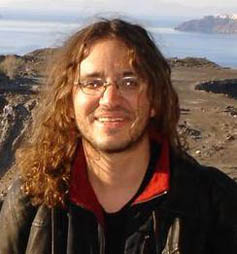

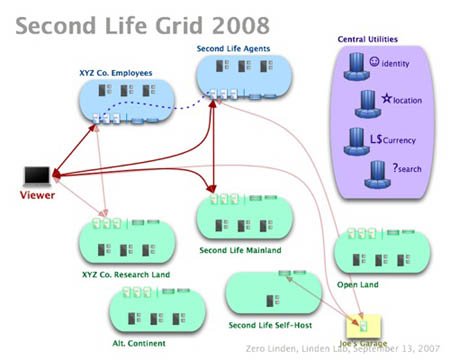
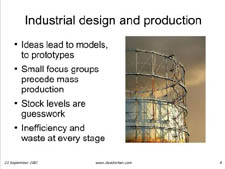
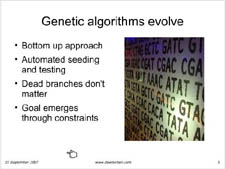
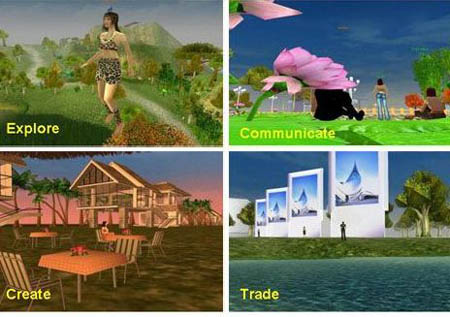

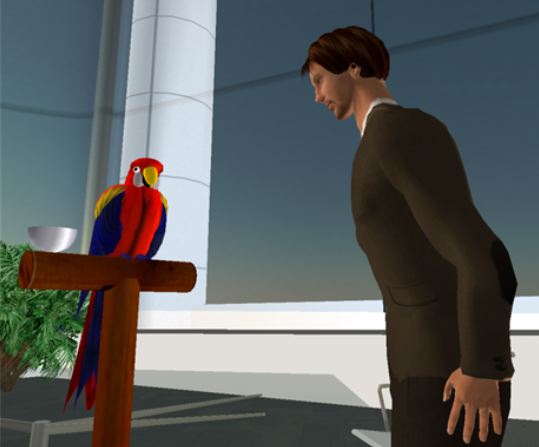
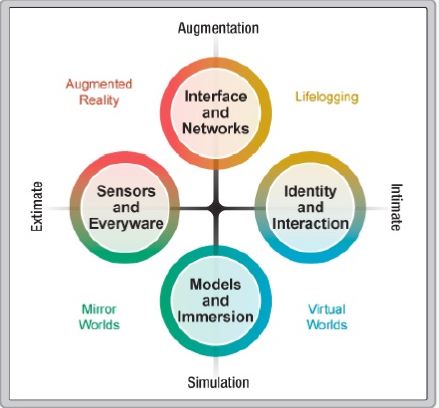
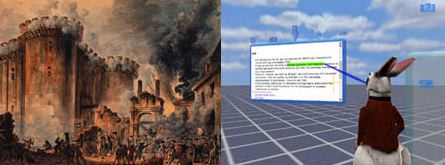
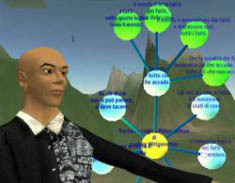

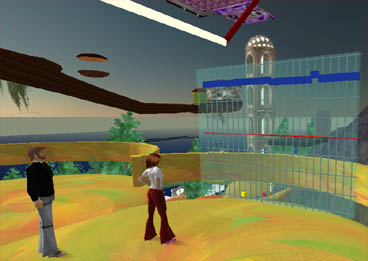
September 30th, 2007 at 12:22 pm
Hi – This is interesting. Having been in the AI world as researcher and later in biz – and now in serious games and games, I saw the newly arising interest in AI once again (ok so mildly transformed shape), and ran the first AI conference in Europe focused on games and serious games back in June this year. We are now open for papers for June 2008 and also any nominations for the advisory council (need to have gravitas and thought leadership to offer). So please get in touch on martine – at– angils – dot — org AI conference is at http://www.applyai.com and the serious games conference we run every year (now in third year) at http://www.applyseriousgames.com – both open for papers now.
Martine
October 27th, 2007 at 12:41 pm
Very interesting. Wisdom of crowd, AGI and lot of new platforms. Drinking from the fire hose indeed.
Avatar Voodo – Avoodo is a way to extend avatar action to tap Artificial Artificial Intelligence of Amazon Mturk.
Check out a demo at: Treepu Sim